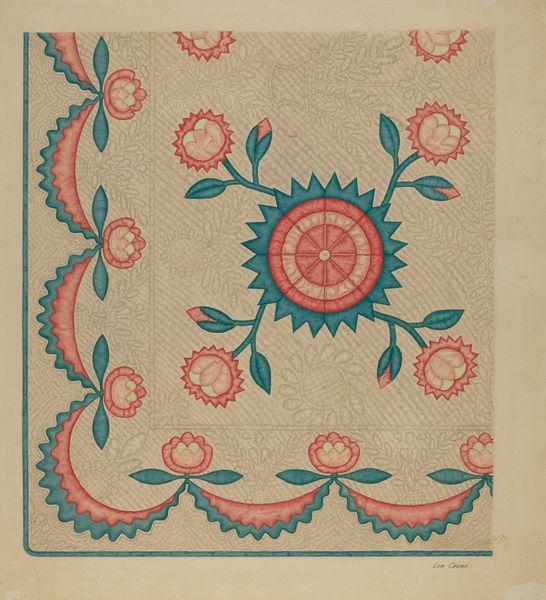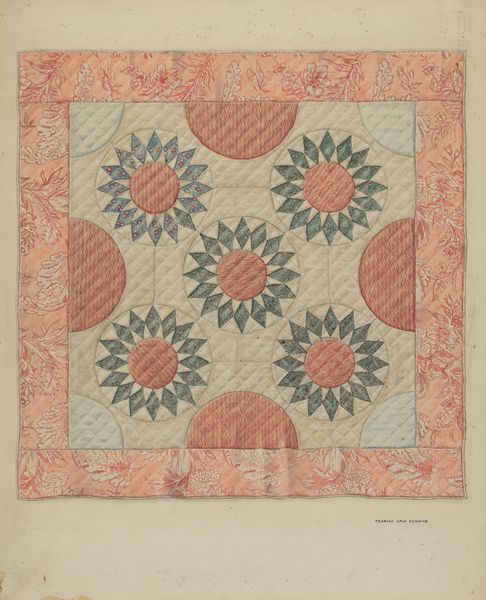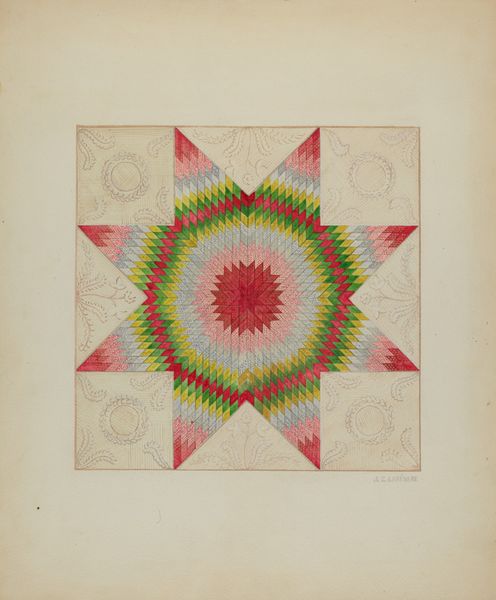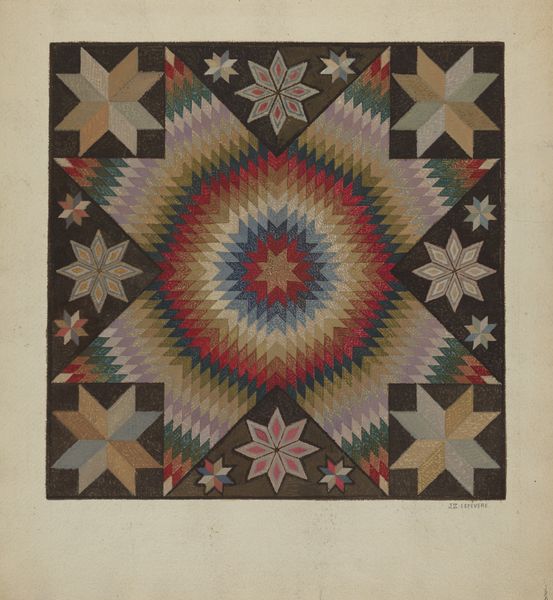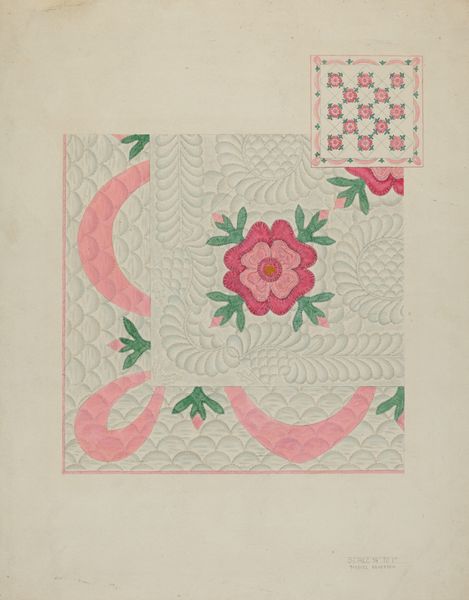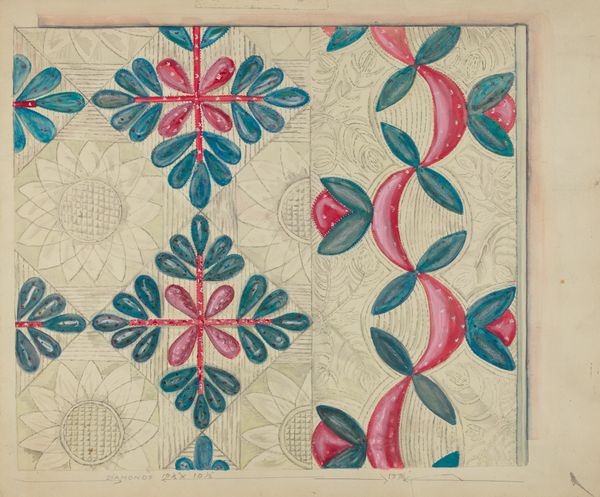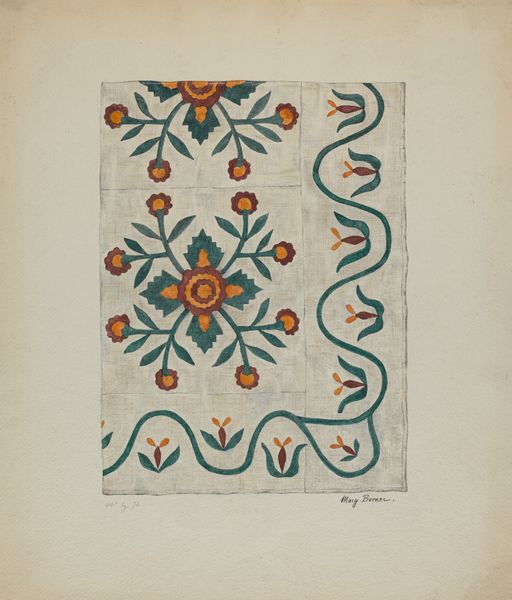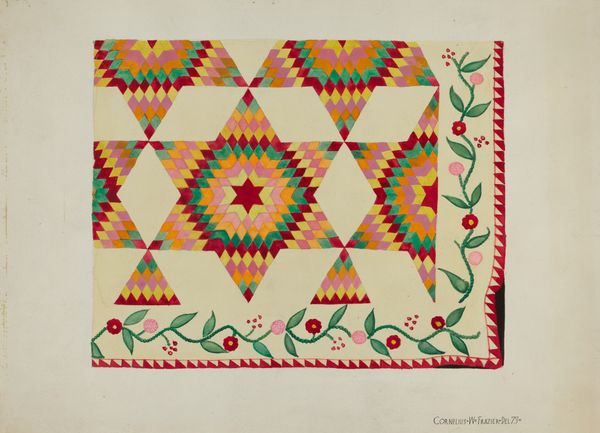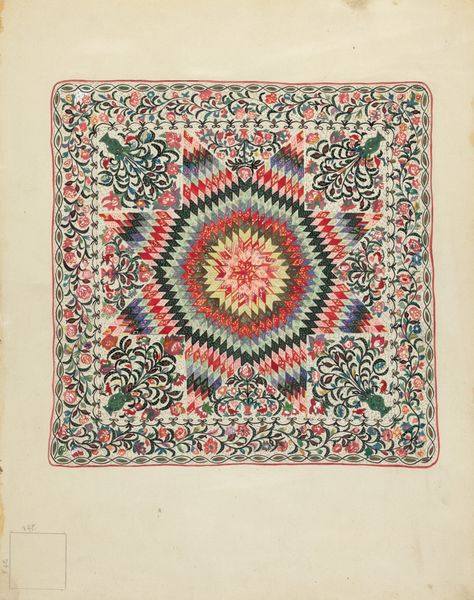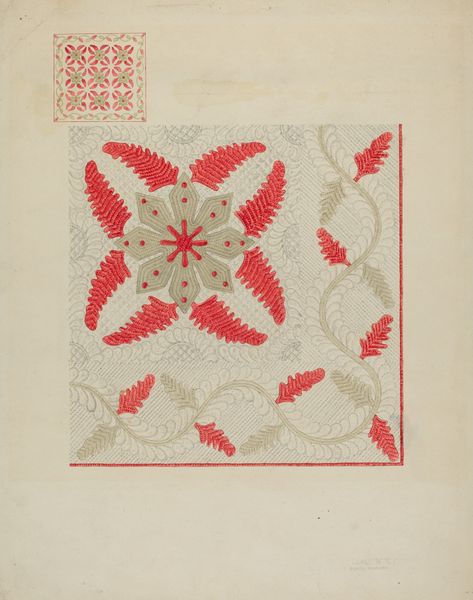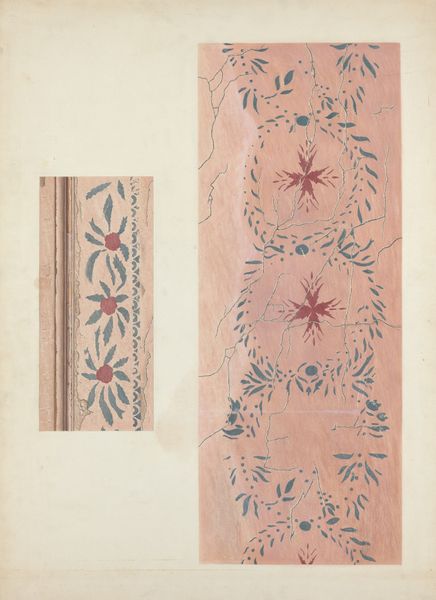
watercolor
#
water colours
#
watercolor
#
folk-art
#
watercolor
Dimensions: overall: 40.7 x 35 cm (16 x 13 3/4 in.)
Copyright: National Gallery of Art: CC0 1.0
Curator: I'm struck immediately by how soothing this artwork feels; it is very soft and airy. Editor: Indeed. Let's delve into this captivating piece. This is a drawing of a quilt from around 1937, attributed to Therkel Anderson. It blends watercolor and textile elements, a fascinating combination of media. Curator: Textile elements… the idea of soft watercolor imitating the actual tactile sensations of fabric and stitching… very interesting! But before the textiles, that central burst of color feels significant. I wonder if the pattern echoes broader cultural symbols of warmth and nurturing. Editor: Perhaps. The symmetry is undeniable, as if meant to ward off bad dreams. Quilt-making carries deep-seated symbolic weight within communities; often representing care, heritage, and shared narratives. What resonates most about this work, in my opinion, is that it shows the process of its design, we have a sketch in one of its corners which reveals how it was made. Curator: You are so right! This work seems less about individual artistic vision and more about communal artistry and tradition; and these kinds of themes were pretty well established around 1937. It does, however, use watercolor. Watercolors allow a softness of edge that contributes to a feeling of being slightly ethereal or ghost-like. Editor: Agreed, the watercolor medium brings a delicate transparency that might be difficult to realize in the weight of traditional textile-based art forms like quilts. By sketching it as a design, the textile turns weightless, losing the grounded feel of the material! The image itself then feels nostalgic as we move back into cultural memory. Curator: Well, this design offers a glimpse into not only its possible physical construction, but its symbolic construction as well. Editor: It feels so human!
Comments
No comments
Be the first to comment and join the conversation on the ultimate creative platform.
